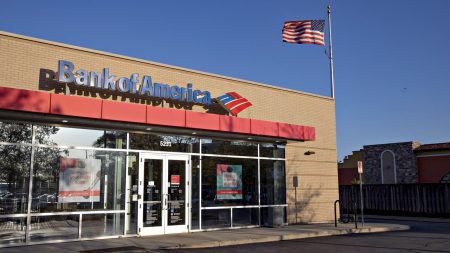Alina Vasylieva/Getty Images
- Banks and credit unions both typically offer a number of financial products, including high-yield savings accounts and certificates of deposit (CDs).
- The main difference between the two is that banks are typically for-profit institutions while credit unions are generally not-for-profit.
- There are pros and cons to opening a bank account with either a bank or credit union, but it’s important to know which more closely aligns with your needs.
Banks and credit unions both offer a number of financial products, including savings accounts and certificates of deposit (CDs). The main difference between the two is that banks are typically for-profit institutions while credit unions are not-for-profit.
Credit unions also may have restricted membership in some cases and may require living in a specific area, working for a certain company or other restrictions.
Bankrate insight
- There were 4,487 FDIC-insured banks and 4,455 federally-insured credit unions that were federally insured in the fourth quarter of 2024. (FDIC and NCUA)
- The average checking account holder sticks with the same brick-and-mortar bank or credit union for 19 years on average. (Bankrate)
- Deposits at FDIC-insured banks increased by a little more than 1 percent (1.2 percent) in the fourth quarter of 2024. (FDIC)
- Only two in five Americans would pay for an emergency using their savings, according to Bankrate’s 2025 Emergency Savings Report. (Bankrate)
- Just under 6 in 10 (59 percent) said they aren’t comfortable with their level of emergency savings. (Bankrate)
Pros and Cons of Banks
Pros of banks
- Wide access: Brick-and-mortar banks may have branches and ATMs down the street from where you work or live. And larger ones may also have locations wherever you travel across the country. Banks generally have more locations than credit unions. For instance, Navy Federal is the largest credit union in the world and only has more than 360 branches across the world. And Chase, the largest bank in the U.S. has more than 4,700 branches.
- Variety of options: Some of the largest banks in the country, such as Chase or Bank of America, are brick-and-mortar banks, but banks can also be small and local or regional and may provide more personalized service. There are also plenty of online-only banks as well.
- Potential for FDIC insurance: Many banks are insured by the Federal Deposit Insurance Corp. (FDIC) for a standard amount of $250,000 per depositor, per FDIC-insured bank, per ownership category. FDIC banks are backed by the full faith and credit of the U.S. government, according to the FDIC’s website.
Cons of banks
Pros and Cons of Credit Unions
Pros of credit unions
- Potential for higher rates: Credit unions may have higher deposit yields than banks in some cases.
- NCUA insurance: Federally insured credit unions are backed by the U.S. government. The National Credit Union Administration (NCUA) is the government agency that insures deposits at member credit unions. Check the NCUA’s Share Insurance Estimator to see how insurance rules apply to member share accounts, which can help you determine what’s insured and if any amount exceeds the coverage limits.
- Personal connection: Credit unions tend to be local or regional and often service a specific community. As such, the service a credit union provides may be more personalized.
- Shared branches: Some credit unions might share branches, enabling you to bank far from home.
Cons of credit unions
- Limited access: Credit unions typically are local or regional and may not serve your area.
- Membership requirements: You might have to live or work in a certain region to become a member of a credit union.
Are banks safer than credit unions?
FDIC banks and NCUA credit unions are both backed by the full faith and credit of the U.S. government and offer similar protections. Both institutions protect up to $250,000 per depositor, per federally insured bank or credit union, per ownership category.
Checking accounts, CDs, savings accounts and money market accounts are examples of accounts that are covered under federal deposit insurance.
Other factors to consider
Here are some other things to consider when choosing between a bank and a credit union.
- Does it offer FDIC or NCUA insurance coverage?
- Are branch and ATM locations convenient? Does it reimburse some or all out-of-network ATM fees?
- Can you find an account with no or minimum fees?
- When it comes to a savings account or CD, can you get a competitive APY?
- Do customer service hours work with your schedule?
- Check Bankrate’s reviews to research and compare banks.
Bottom line
When shopping around for the right bank or credit union, always look out for fees, minimum balance requirements and what rates are offered on savings products. You might also want to consider accessibility — whether that be by branch location or by digital means.
Most consumers keep their bank account with the same institution for over a decade, so it pays to make a decision that you feel confident with. But don’t hesitate to switch to a new bank or credit union, especially when some institutions are offering yields that far outpace others.
Read the full article here









